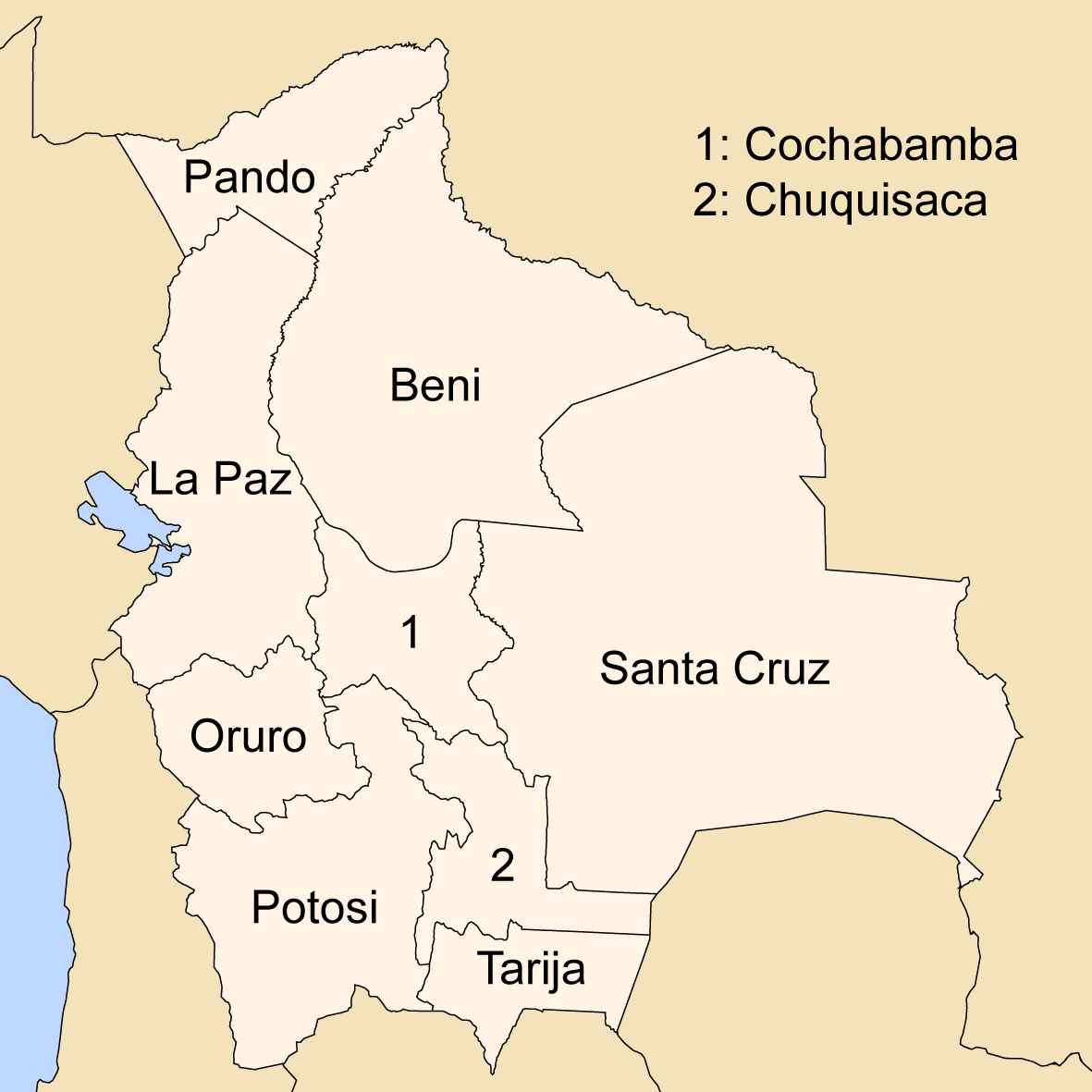|
Cañaviri
Cañaviri is a small town in Bolivia. In 2010 it had an estimated population of 992. Location and Nearby Places Cañaviri is the central place of Cantón Cañaviri and most populous town in the county ( Bolivian : Municipio ) Umala in Aroma Province Aroma is one of the twenty provinces of the Bolivian La Paz Department. It is situated in the southern parts of the department. Its seat is Sica Sica (Sika Sika). Location Aroma province is located between 16° 43' and 17° 35' South and betwe .... Situated at an altitude of 3852 m at the northern end of the Serrania de Huayllamarca, an approximately 100 kilometer long ridge, which is on the Altiplano in the west of the city of Oruro extends into northwest-southeast direction. Geography Cañaviri located on the Bolivian high plateau between the Andes mountain ranges of the Cordillera Occidental in the west and the Cordillera Central in the east. The climate is the typical time of day climate of the equatorial high mountains, the ... [...More Info...] [...Related Items...] OR: [Wikipedia] [Google] [Baidu] |
Provinces Of Bolivia
A province is the second largest administrative division in Bolivia, after a department. Each department is divided into provinces. There are 112 provinces. The country's provinces are further divided into 337 municipalities which are administered by an alcalde and municipal council. List of provinces Beni Department Chuquisaca Department Cochabamba Department La Paz Department Oruro Department Pando Department Potosí Department Santa Cruz Department Tarija Department See also * Departments of Bolivia Bolivia is a unitary state consisting of nine department (administrative division), departments (). Departments are the primary subdivisions of Bolivia, and possess certain rights under the Constitution of Bolivia. Each department is represented ... * Municipalities of Bolivia Sources Instituto Nacional de Estadística - Bolivia(Spanish) {{Articles on second-level administrative divisions of South American countries Su ... [...More Info...] [...Related Items...] OR: [Wikipedia] [Google] [Baidu] |
Departments Of Bolivia
Bolivia is a unitary state consisting of nine department (administrative division), departments (). Departments are the primary subdivisions of Bolivia, and possess certain rights under the Constitution of Bolivia. Each department is represented in the Plurinational Legislative Assembly—a bicameralism, bicameral legislature consisting of the Senate and the Chamber of Deputies. Each department is represented by four Senators, while Deputies are awarded to each department in proportion to their total population. Out of the nine departments, La Paz Department (Bolivia), La Paz was originally the most populous, with 2,706,351 inhabitants as of 2012 but the far eastern department of Santa Cruz Department (Bolivia), Santa Cruz has since surpassed it by 2020; Santa Cruz also claims the title as the largest, encompassing . Pando Department, Pando is the least populated, with a population of 110,436. The smallest in area is Tarija Department, Tarija, encompassing . Departments Forme ... [...More Info...] [...Related Items...] OR: [Wikipedia] [Google] [Baidu] |
Municipalities Of Bolivia
Municipalities in Bolivia () are administrative divisions of the entire national territory governed by local elections. Municipalities are the third level of administrative divisions, below departments and provinces. Some of the provinces consist of only one municipality. In these cases the municipalities are identical to the provinces they belong to. There are 340 municipalities. History of governance Municipalities in Bolivia are each led by a mayor, an executive office. Mayors were appointed by the national government from 1878 to 1942 and from 1949 to 1987. Local elections were held under the 1942 municipal code, which was in force until 1991. The 1985 Organic Law of Municipalities restored local elections for mayor and created a legislative body, the municipal council. In 1994, the entire territory of Bolivia was merged into municipalities, where previously only urban areas were organized as municipalities. As an effect of decentralization through the 1994 Law of Popular ... [...More Info...] [...Related Items...] OR: [Wikipedia] [Google] [Baidu] |
Bolivia
Bolivia, officially the Plurinational State of Bolivia, is a landlocked country located in central South America. The country features diverse geography, including vast Amazonian plains, tropical lowlands, mountains, the Gran Chaco Province, warm valleys, high-altitude Andean plateaus, and snow-capped peaks, encompassing a wide range of climates and biomes across its regions and cities. It includes part of the Pantanal, the largest tropical wetland in the world, along its eastern border. It is bordered by Brazil to the Bolivia-Brazil border, north and east, Paraguay to the southeast, Argentina to the Argentina-Bolivia border, south, Chile to the Bolivia–Chile border, southwest, and Peru to the west. The seat of government is La Paz, which contains the executive, legislative, and electoral branches of government, while the constitutional capital is Sucre, the seat of the judiciary. The largest city and principal industrial center is Santa Cruz de la Sierra, located on the Geog ... [...More Info...] [...Related Items...] OR: [Wikipedia] [Google] [Baidu] |
Aroma Province
Aroma is one of the twenty provinces of the Bolivian La Paz Department. It is situated in the southern parts of the department. Its seat is Sica Sica (Sika Sika). Location Aroma province is located between 16° 43' and 17° 35' South and between 67° 22' and 68° 23' West. It extends over 120 km from north west to south east, and up to 55 km from north east to south west. The province is situated on the Bolivian Altiplano south east of Lake Titicaca and borders Ingavi Province in the north west, Pacajes Province in the west, Gualberto Villarroel Province in the south, Oruro Department in the south east, Loayza Province in the east, and Pedro Domingo Murillo Province in the north. Geography Some of the highest mountains of the province are listed below: Population The population of Aroma Province has increased by 80% over the recent two decades: *1992: 65,730 inhabitants (census) *2001: 86,480 inhabitants (census) *2012: 98,205 inhabitants (census) *2024: 112 ... [...More Info...] [...Related Items...] OR: [Wikipedia] [Google] [Baidu] |
